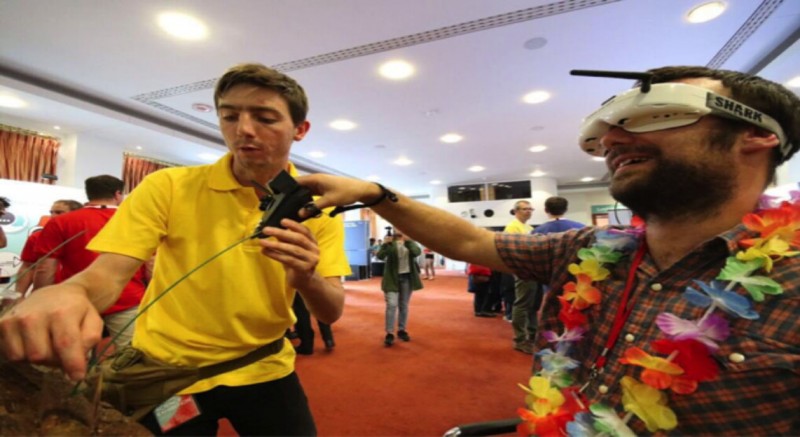By Paola Colaço Osorio
From the imperceptibly small to the unimaginably large, the range in scale of the science presented at this month’s Royal Society Summer Science Exhibition 2017 was vast – from molecular cages just a few nanometres across, to the cosmos-wide search for gravitational waves.
The smooth organisation and running of the summer exhibition relies on volunteers. These included Honor Pollard, LMS science communications summer student in 2016, and Bertie Gyenes, from the Behavioural Genomics group at the Institute.
Honor was inspired to volunteer by her time at the Institute last summer. ”Before I did my internship I didn’t realise just how many options there were in science that wasn’t being in a lab all day,” she said “The internship helped me realise that I wanted to do science communication. During the internship last year I interviewed Bertie, who was volunteering here himself – I very specifically asked him when the applications opened so that I could come and do it this year!”
Exhibits filled the rooms of the Royal Society, each featuring an area of cutting-edge science presented by the researchers themselves. Visitors could question the scientists, and interactive exhibits provided hands-on ways to visualise science in unexpected ways. ‘’My favourite exhibit this year was probably the beating heart exhibit,’’ says Bertie. Visitors had the opportunity to hold a mechanical heart, designed to beat in time with their own pulse. ‘’It provided a wonderful and unique experience. I also found the research on using virtual reality to treat mental health fascinating and very important.’’

Think like a bird: a crow’s eye view of tool-making at the Royal Society
Virtual reality was a common theme, with several stands offering visitors the chance to try out VR headsets. One stand, on New Caledonian crows, and their ability to make tools, was especially popular with the school groups with whom we shared our visit. A VR headset was linked to a camera on a model of a crow’s head, allowing the students to attempt to make a wire tool for themselves, with a literal bird’s eye view.
If visitors were feeling inspired by the Caledonian crows’ impressive tool-making skills, they could head to the stand next door, where researchers from Imperial College London helped visitors with hands-on activities that included constructing a porous cage using origami, or for the less dextrous, a 3D printed version. The molecular cages discovered by these researchers have potential applications in absorbing and separating gases by size, for example in the removal of cancer-causing formaldehyde.
Bertie Gyenes has been volunteering at the exhibition for two years running, and explained what was special about the event. ‘‘The exhibitors love enquiring questions and sometimes get great ideas from the public, while the public cherishes the opportunity to talk to real life scientists about their cutting edge research. This is the crown jewel of science festivals in the UK, largely thanks to the competitive selection process for exhibits. The wonderful surroundings also help!’’
‘’My favourite exhibit was ‘Mapping Cancer’s Secret Chemistry’’ says Honor ‘’My understanding of cancer comes from a biological, mostly genetic perspective. This exhibit gave me a chance to see how other disciplines approach the same subject. I learnt a lot about the metabolic and chemical differences between normal and cancer cells and how we can exploit these differences in treatments.’’
The exhibition is a competitive opportunity for researchers to raise the profile of their work with influencers, including potential funders, government and the public. The Royal Society website has more information about submitting a proposal and hosting an exhibit.
Next year the exhibition will run from 2nd – 8th July 2017. The deadline for submissions is the 1st September 2017.
Paola Colaço Osorio is the 2017 LMS science communications summer student.
